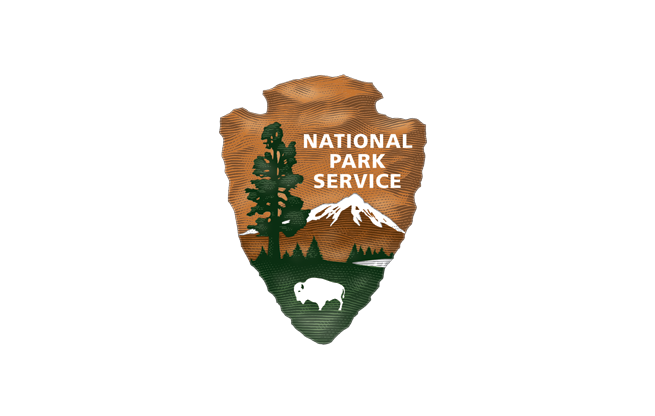Mel, what first sparked your passion for national parks and led you to work with Hawaiʻi Pacific Parks Association (HPPA)?
I didn’t grow up with much, but my dad had this passion for the outdoors. We had a farm, and his goal was to visit every national park in the U.S. Every summer, he’d close our used furniture business, and we’d hit the road. Yosemite became our home base, and we’d visit about four or five different national parks each year. My whole childhood was filled with these adventures.
At one of our favorite campgrounds, Summerdale, near Fish Camp outside Yosemite, they had what we called “Ranger Night.” There was this big bonfire, we’d roast marshmallows, and the ranger would give different talks every week. That kind of freedom—catching pollywogs, tubing down rivers, and hiking—just fueled my love for the parks.
I grew up amazed at how unique each park was: the geysers and wildlife of Yellowstone, the beauty of Montana’s parks. When I turned 14, I got my first job with the U.S. Forest Service, which was so exciting—I even got to ride in helicopters during forest fires!
A pivotal moment came when I was 15. In geometry class, I got a note asking if I’d like to get paid to work in Yosemite for the summer. That was through a program called Upward Bound, designed for underserved youth. We did college classes during the school year and worked in the parks during the summer. Those summers really shaped me—backpacking, taking water samples, leading night hikes. The rangers I worked with were passionate about stewardship, and that idea of caring for the land took deep root in me.
Even after college, my family kept up the tradition of visiting national parks each summer. When I moved to Hawaiʻi, I felt a similar love for the natural beauty of Hawaiʻi. My husband and I would explore Hawaiʻi Volcanoes National Park, and when I saw a job opening with Hawaiʻi Pacific Parks Association (HPPA), I knew I had to go for it. It felt like coming full circle—my first job was with the U.S. Forest Service, and now my last job would involve supporting national parks. It’s meaningful work, and that’s important to me.
What was your first day like with HPPA?
I remember it distinctly. HPPA is based in Hawaiʻi Volcanoes National Park, in this beautiful historic building that used to be a home. My new boss, Margot Griffith, gave me a tour, and I immediately felt at home. I grew up in a historic home, so I appreciated the homey quirks—like pocket doors that didn’t quite work anymore.
Margot’s warmth made me feel valued, and though there was a lot to do, I didn’t mind learning the ropes on my own. I have a background in facilitation and project management, so I started volunteering to help. The team was small but mighty, and I quickly felt like I was where I belonged—combining my love for the parks with my retail experience. I even got to meet our retail team and see how engaged and invested they were.
I left work that day feeling great—though I did get a speeding ticket on the way home!
What was yesterday like in contrast?
Yesterday was busy, but exciting. We’ve been working on the remodeling plans for the visitor center stores in all the parks we partner with. I spent time reviewing store plans and getting ready for a planning meeting at Kaloko-Honokōhau National Historical Park. There’s so much potential, and we’re excited to create more interactive, immersive visitor centers and better utilize our space.
On top of that, we’re closing out the fiscal year, so I worked on payroll, planned board orientations for new members, and tried to get through a ton of emails. One of the highlights was drafting a message to the team about the past year and what’s coming up next. It’s been a whirlwind, but I love seeing how much we’ve accomplished.
What is one of the most exciting projects HPPA has been involved in recently?
The remodels at the visitor centers are definitely exciting. Most of the buildings are historic, and they haven’t been updated in years. It’s been great to collaborate with our park partners to rethink the space and create more meaningful, interactive experiences for visitors, even without adding square footage.
I’m also really excited about our new mobile visitor center trailer for Hawaiʻi Volcanoes National Park. It’s all tricked out and wrapped in signage, and we plan to place it in a busy parking lot to connect with visitors and drive sales. We also hope to use it for outreach projects—it’s a great opportunity to engage more people in the park.
What is one unique item or product you’re especially proud of that we sell?
That’s a tough one! I love so many of our products. The Little and Wood puzzles are adorable, and I’m a big fan of my Haleakalā Rumpl blanket. We’re also really excited about the hiking series developed for Ala Kahakai National Historic Site, our newest partner. It’s already brought in close to $60,000 from the sun shirts alone, and we’ve got hiking sticks, sun hats, and socks that are flying off the shelves.
Each of our products is thoughtfully curated, and we take pride in the quality and the stories they tell. Even the NPS Director and the Director of Interpretation from Washington, D.C. have complimented us on the quality of our products, which makes us feel incredibly proud of our talented team.
How does HPPA work with local businesses and artists to bring Hawaiʻi to the visitor?
Supporting local businesses and artists is a top priority. Whenever we’re considering a new product, we always look for a Hawaiʻi-based practitioner first. We also focus on bringing in handmade products as much as possible. If we can’t source locally, we look for vendors in the U.S., and only as a last resort do we go overseas.
We attend cultural festivals and craft fairs like Made in Hawaiʻi and Made in Maui, looking for new vendors to work with. Our area managers and creative services director always go to these events with a mission in mind. Everything we sell has to be approved by the parks, so we often bring our NPS partners along to these events to help build relationships with vendors.
We’re also involved in cultural demonstrations at the parks. For example, at the National Park of American Samoa, we support a program where practitioners are paid to weave traditional items, and we may be able to sell their products in the future. It’s a great way to help these artisans make some income while offering visitors something genuine.
What’s the secret to keeping HPPA financially strong while staying true to the mission?
There are four main factors. First, having a sound financial strategy and managing those goals actively. Second, maintaining strong partnerships with the parks to ensure we’re providing meaningful products that support both our mission and theirs. Third, our people—our team is dedicated and passionate about engaging visitors and sharing the stories of the parks. Finally, constantly seeking innovative, unique products that help us increase margins and contribute more to the parks.
Our Board of Directors is also incredibly supportive, and we’re blessed to have members who are deeply immersed in Hawaiian culture. They help us stay grounded in our mission and vision.
What’s your big dream for HPPA in the next five to ten years?
Our immediate focus is successfully launching the remodeled visitor centers, but my bigger vision is for HPPA to become a go-to resource for other cooperating associations. We want to leverage our knowledge, negotiate better deals, and help other associations with operational challenges.
I also want to ensure we have a solid succession plan. My goal is to set up the next generation at HPPA for success. We have an amazing team, and I want to make sure they have the tools, training, and environment to thrive. When I eventually retire, I want to leave knowing HPPA is in an even better place than when I started.
Learn about cooperating associations like HPPA: https://npshistory.com/brochures/nps-cooperating-assoc.pdf
Shop to support Hawaiʻi national parks: https://shop.hawaiipacificparks.org/
Become a member! https://www.hawaiipacificparks.org/connect/membership



